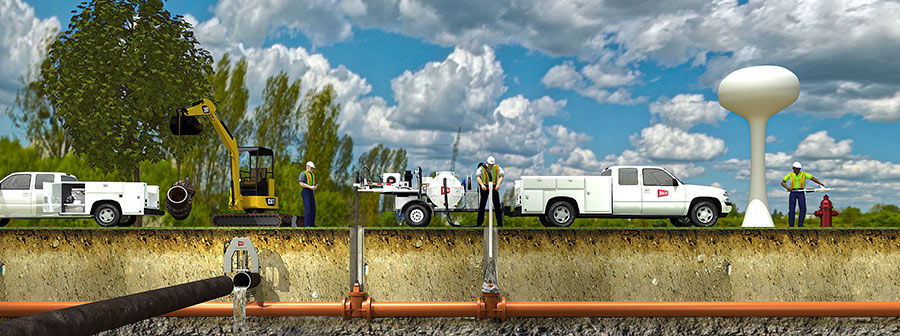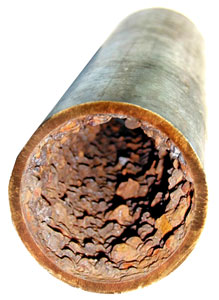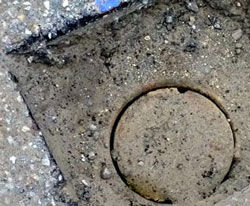Valve Maintenance Programs
Maintaining your vital water systems

A valve maintenance program is vital for the security of the water delivery network. Knowing where valves are located and ensuring that they operate as designed and work during emergencies are important to any municipality or water utility. Exercising valves on a regular basis will extend their service life. Additionally, in an emergency, having valves that work as expected can reduce water loss, minimize damage and flooding, and prevent customer disruption.

When deposits from water and iron form on a valve, it can make the valve difficult or impossible to operate with hand tools. If a valve hasn't been turned regularly the valve can require replacement, making it a liability for the water delivery system. If a valve is stuck in the closed position, it can prevent the delivery of water when necessary. A stuck open valve can cause additional damage in the event of a water main break or other emergency.
For cleaner water and to prevent valves from sticking, Wachs, Valve Manufacturers, the AWWA & EPA all recommend a valve maintenance program where valves are operated on a set basis, depending on the size and volume of water flowing through the valve.
- Critical valves and transmission valves should be exercised often, while smaller valves should be operated on a less frequent schedule.
- To operate these valves, a gradually increasing rotational force should be applied to the operator nut, in a back-and-forth motion to clean and refurbish the valve stem and gate; breaking off and flushing away debris as it passes through the system.
- The following should be recorded for each valve:
- The Number of turns a valve takes to operate
- The size of the valve
- The valve close directionality (clockwise or counterclockwise)
- The type of valve (gate valve, butterfly valve, etc.)
 The location of the valve (in the street, next to the road, latitude/longitude, etc.). Also, sometimes valve boxes can be inadvertently covered by landscaping or paving. A lost valve can be as bad as a broken valve.
The location of the valve (in the street, next to the road, latitude/longitude, etc.). Also, sometimes valve boxes can be inadvertently covered by landscaping or paving. A lost valve can be as bad as a broken valve.- The last position (open, closed, etc.) should be recorded. If a valve is found in a different position or found to have a different number of turns it could indicate a problem with the valve.
- Valve condition (does it function properly, is it leaking, condition of the operator nut, etc.)
- Valve box condition (is it full of debris, is the lid missing, is the vault centered properly, is it paved over, etc.)
